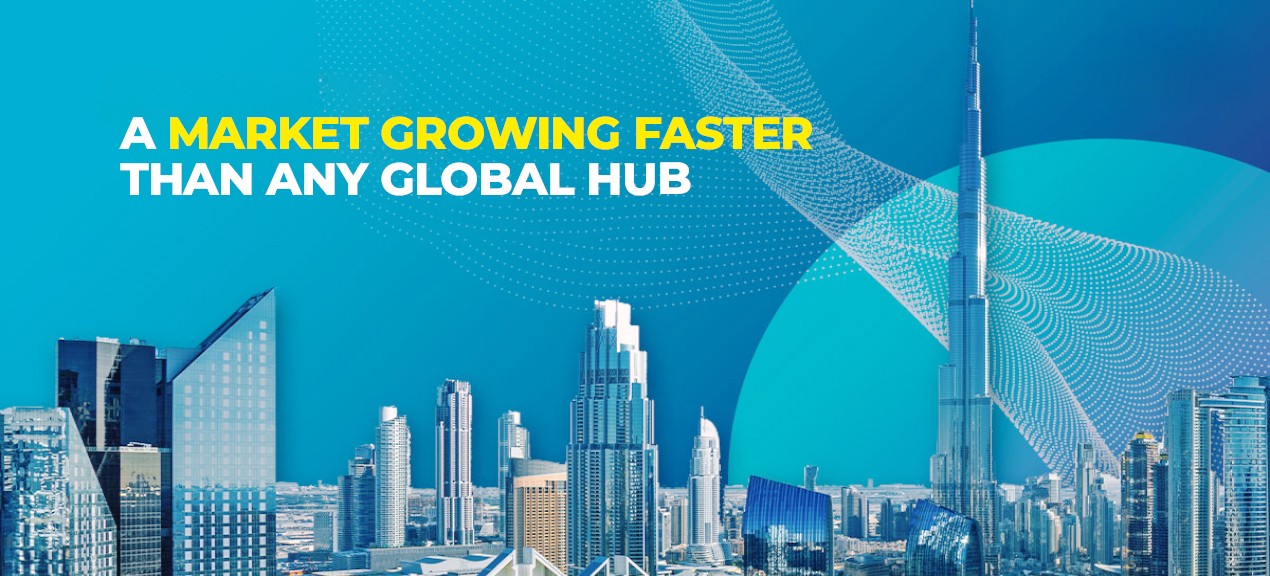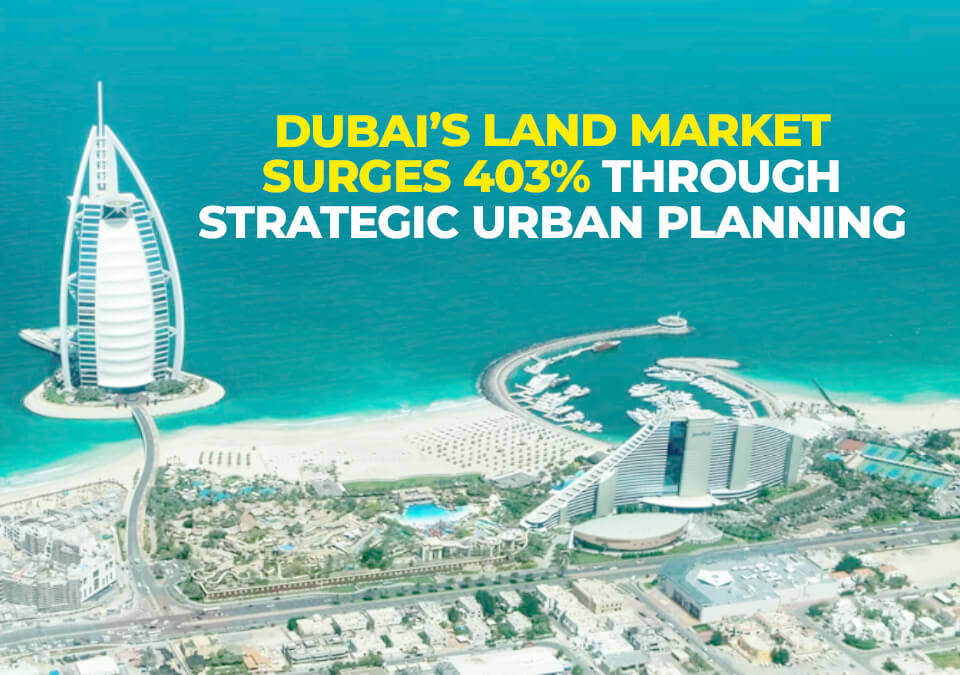
Dubai continues to modify the global real estate landscape, and new data confirms just how powerful its growth has become. According to the recent reports, Beyond the Skyline: Dubai’s Land Market Transformation, the emirate has experienced a dramatic 403.6% surge in land transaction values between 2019 and 2024. This momentum reflects more than demand; it highlights a city where infrastructure, innovation, regulatory evolution, and population growth are working together in a highly coordinated way.
For buyers, investors, sellers, and newcomers to the Dubai property market, this transformation signals that confidence is at an all-time high and that opportunities are expanding across every segment.
A Market Growing Faster Than Any Global Hub

Dubai’s land transaction values rose from AED 13.7 billion in 2019 to AED 68.8 billion in 2024, with volumes rising from 691 to 1,991 transactions. A sharp 188.1% increase. The momentum has not slowed. In the first half of 2025 alone, the city recorded AED 43 billion in land transactions, marking a 42.9% year-on-year jump.
This level of activity showcases two realities:
- Investor confidence in Dubai is accelerating.
- Dubai’s master-planned growth model continues to outperform international markets.
Freehold zones have been the standout performers, recording a 495.8% rise in transaction volume, vastly outpacing non-freehold areas. This directly reflects the global and regional need for full ownership rights, especially as Dubai continues to expand and convert new freehold districts along Sheikh Zayed Road, Al Jaddaf, and other high-potential corridors.
What’s Driving Dubai’s Real Estate Momentum?

1. A Rising Population Fueling Demand
Dubai’s population has grown from 2.3 million in 2014 to over 4 million by 2025, and is projected to reach 5.8 million by 2040. This demographic expansion is not simply population growth, but it’s strategic. The influx of residents, entrepreneurs, and investors increases housing demand, drives commercial expansion, and strengthens long-term value appreciation.
Key lifestyle destinations such as Business Bay, Downtown Dubai, Dubai Marina, Dubai Creek Harbour, and Palm Jumeirah continue to drive premium demand. Meanwhile, growth zones such as Dubai South, Reem, and new districts along the Dubai-Al Ain corridor are shaping the next frontier of value-driven opportunities.
2. Massive Infrastructure Spending
Dubai’s 2025 budget reinforces the emirate’s commitment to sustainable and scalable development. Nearly 46% of the entire annual budget, totalling AED 39 billion (USD 10.6 billion), is dedicated to infrastructure.
Allocations include:
- USD 2.6 billion for roads and mobility
- USD 2.4 billion for utilities
- USD 1.8 billion for transportation systems
These investments directly enhance property values, improve connectivity, and increase long-term rental and resale returns.
3. Regulatory Innovation Strengthening Investor Trust
Dubai has distinguished itself through transparent and efficient real estate regulations, including:
- Mandatory escrow accounts
- Blockchain-enabled property transactions
- Transit-Oriented Development (TOD) rezoning
- Major freehold expansions in prime districts
These initiatives reduce risk, streamline processes, and encourage long-term private-sector participation. This is reflected in the data: non-institutional developers now account for 42.3% of the residential pipeline for 2026-2030.
Market Performance: Where Demand Is Strongest
With a 518.5% increase in activity, residential demand remains dominant. Prices have surged:
- Apartments up 63.5% since 2019
- Villas up 116.3% since 2019
Communities offering waterfront access, strong connectivity, and mixed-use convenience remain top performers.
Commercial and Office Market
Dubai’s office market is experiencing one of the fastest supply periods in the world.
Investment Hotspots
Mixed-use projects dominate investor interest, accounting for 27.6% of total land transaction value (AED 70.3 billion).
Top areas by value include:
- Business Bay – AED 11.6 billion
- Dubai Islands – AED 11.4 billion
Premium price points are visible in:
- Dubai Marina – AED 1,092 per sq ft
- Business Bay – AED 687 per sq ft
Emerging districts such as Arjan and Dubai Creek Harbour have experienced land value increases of 379.6% and 81.4%, respectively, creating powerful opportunities for early investors.
What This Means for Buyers, Investors, and Newcomers

Dubai’s real estate rise is not a temporary upswing, but it’s the product of conscious planning, long-range policies, and a clear vision for urban growth.
For end-users, this means:
- Stronger community infrastructure
- Higher-quality master-planned neighborhoods
- Predictable long-term appreciation
For investors, this means:
- Secure ownership frameworks
- Consistent rental demand
- Global-level transparency
- Strong capital appreciation potential
For newcomers entering Dubai for the first time, the market offers:
- Diverse price points
- Investment strategies
- Options across freehold, waterfront, villa, and apartment segments
Dubai’s transformation is not only shaping the emirate but also becoming a global benchmark for cities seeking to attract long-term foreign investment. Dubai presents a “blueprint for sustainable urban development,” driven by demographics, infrastructure, and regulation.
Conclusion
Dubai’s 403% rise in land market activity reflects strategic planning, rising demand, and confidence from global and regional investors. As the city moves toward the goals of the Dubai 2040 Urban Master Plan, opportunities across residential, commercial, and mixed-use segments will continue to expand.
For anyone looking to buy, sell, or invest, this is a pivotal moment to understand the market’s direction and position themselves for long-term gains.
To stay informed, explore more insights on the Luxliving Real Estate blog and visit our website for expert guidance, market updates, and investment opportunities in Dubai’s most promising communities.
